Borthwick Castle has played host to Mary, Queen of Scots, been attacked by Oliver Cromwell’s forces and hid some of Scotland’s priceless objects during the Second World War.
After the war was declared in 1939, the Royal Scottish Museum (now the National Museum of Scotland) “evacuated” objects to keep them safe from enemy bombs. Many of the exhibits were carefully packed away and sent 12 miles south-east of Edinburgh to Borthwick Castle.
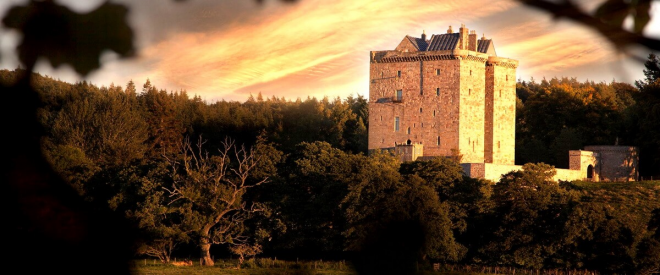
This imposing fortress in Midlothian was built with thick stone walls and a tall tower house in 1430 for Sir William Borthwick. It was visited by Mary, Queen of Scots in 1563, 1566 and again in 1567, after the murder of her husband, Lord Darnley. The castle was surrounded by an army although Mary managed to escape by disguising herself as a page. In 1650, the Castle was attacked by Oliver Cromwell’s forces during his campaign against the Scottish army. Almost 300 years later, the castle resumed its defensive duties.
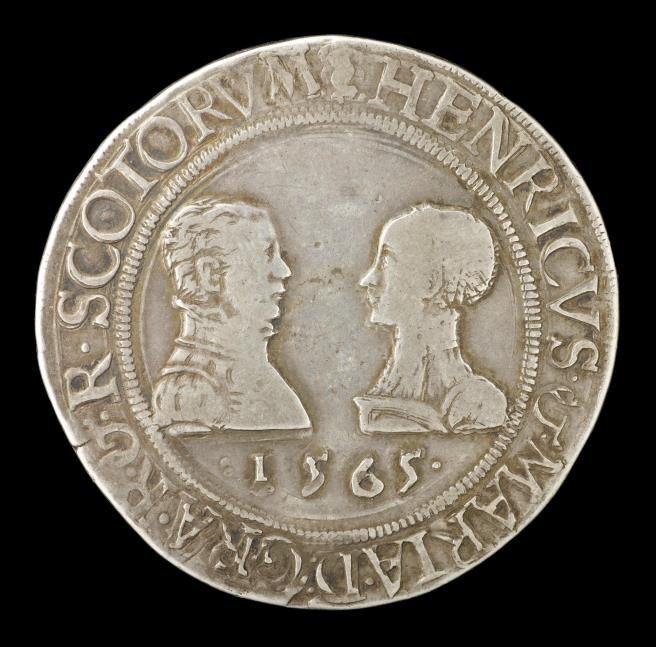
According to an article in The Scotsman published on 4 September 1945 (the day after the “reverse removal” began), “Practically everything in the Art and Archaeology department was taken away to the country – woodwork, metalwork, pottery, glass, textiles, ivories, and so on – while from the Technology section, about one tenth of the articles left Edinburgh.”
Safety wasn’t guaranteed in this temporary home. Museum experts had to guard against damp, rust and insects, which meant “tooth-combing” the packing materials, creating a telephone link to Chambers Street and living in the castle. According to The Scotsman article, they worked on a rota basis and three attendants were constantly on duty. The tapestries were particularly troublesome, as they couldn’t be hung on the walls due to limited space. Instead, they were wound off their rollers and frames each week to be dusted and aired.
Six years after their removal, the war came to an end and the objects began their journey back to Edinburgh. Borthwick Castle was eventually converted to a conference centre and then a hotel in 1973, and experienced an overhaul in 2013. It’s now used for private hire, corporate events and weddings.
And the objects? You can now see many of them in the National Museum of Scotland:
Hobby horse
A hobby horse (early bicycle) appears in one of the evacuation documents. This is the only hobby horse in the collection.
On display: Science & Technology gallery (Level 3, Technology By Design)
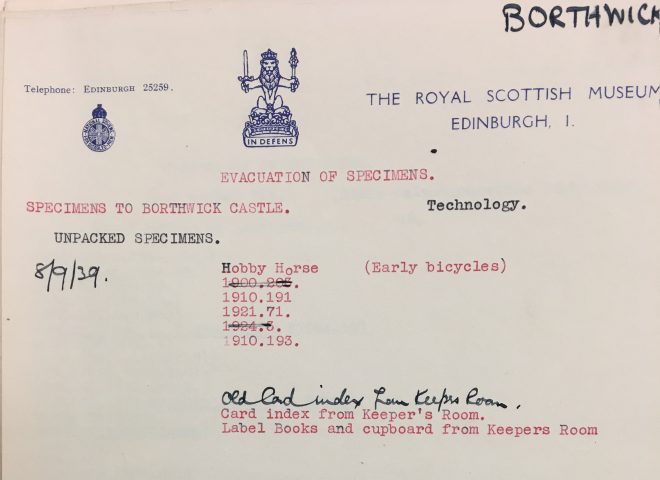
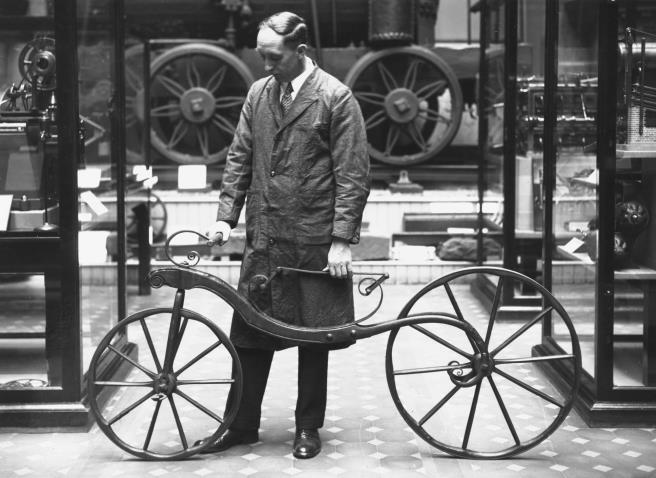
Penny Farthing
The Museum’s only Penny Farthing appears in a photograph in The Scotsman article with the caption: “Workmen lifting a heavily-carved door on the removal of Royal Scottish Museum exhibits was begun yesterday from Borthwick Castle, where they have been stored during the war. A “penny-farthing” is on the right.”
On display: Science & Technology gallery (Level 3, Technology By Design)
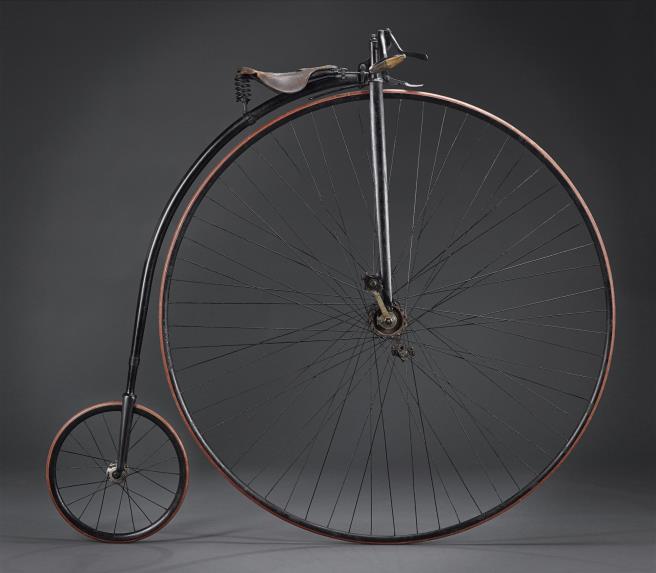
Wall hanging
According to The Scotsman article, “A special watch was also kept on the curtain and valances said to have come from the bed of Mary Queen of Scots in Lochleven Castle, and which are also believed to have been at Borthwick while the Queen was there. The Museum authorities like to think that the curtain and valaces might actually have been storied in the same room which Mary occupied.” The Lochleven hangings are now known not to have been made by Mary.
On display: Scottish galleries (Level 1, The Renaissance)
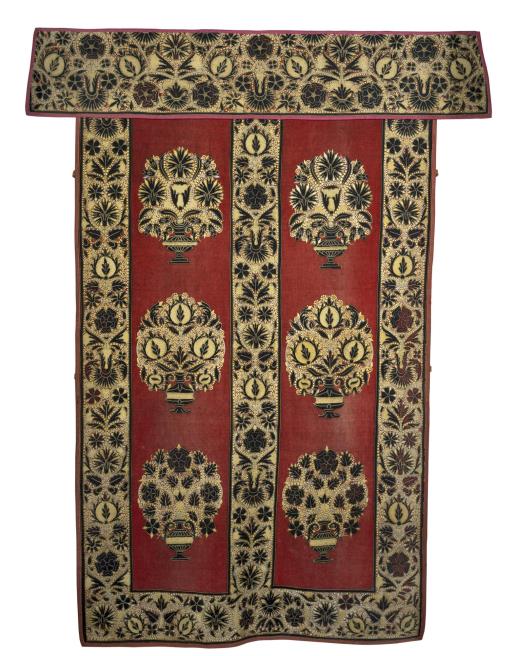
Simple microscope, in a fish-skin case
The reference number for this microscope also appears in one of the evacuation documents (“1925.9”).
On display: Science & Technology gallery (Level 5, Enquire)
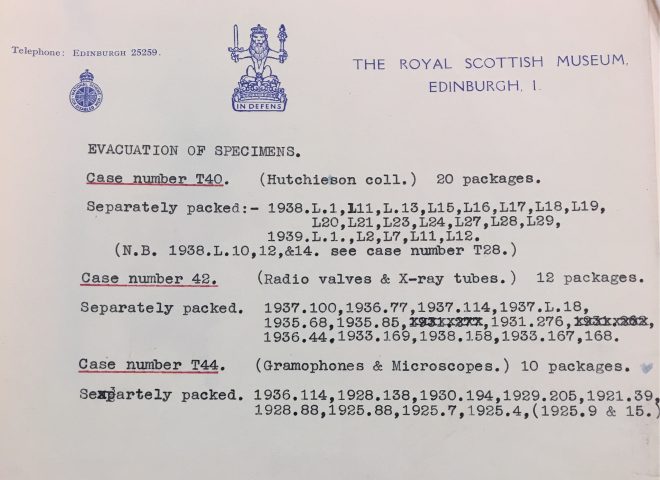

The National Museum of Scotland in Edinburgh is open daily from 10:00 to 17:00 (with exceptions on Christmas Day, Boxing Day and New Year’s Day). Admission is free.
Thanks to Kieran Rose, Front of House Manager at Borthwick Castle, for inspiring and contributing to this blog post, as well as the team at the National Museum of Scotland Research Library.
